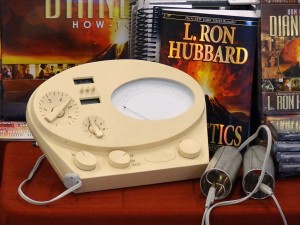On Scientology
Some have asked why I didn’t focus on Scientology in my book chapter on Florida’s unusual religions and practices. After all, it was founded by a sci-fi writer. It uses an electropsychometer, a device which looks and sounds like something from a 1950s b-movie, to help “clear” practitioners of implanted “spiritual disabilities.”
The church’s outreach group is called Sea Org and upper ranks dress like naval officers. And most germane to Florida, it owns about half of downtown Clearwater. The Gulf coast city is home to Scientology’s spiritual headquarters, or Flag, as the church calls it, being short for flagship. These are just a few of the church’s, shall I say, unconventional attributes. Solidly fringe material.
But Florida has so many faiths that fall outside the norm. I gravitate to irony, so I juxtaposed one of Florida’s oldest religious communities which holds séances and orb tours with the Disneyfication of Christianity at Holy Land Experience. Little evokes “Florida!” more than a theme park.
That’s not to say I didn’t consider Scientology. During my Florida travels, I stumbled upon a Scientology gathering at one of their multiple buildings in downtown Clearwater. I got an e-meter demonstration by a Flag member wearing gold lipstick. I watched the church’s slickly produced, ambiguous videos on large HDTVs while the same Flagger watched me. I took their personality test, which another Flagger said showed I was depressed. (She told my friend the same thing.) My unplanned visit was quite enlightening, but after reading about the church’s response to press and the South Park parody, I decided it best to leave in-depth coverage of Scientology to those with a legion of lawyers on retainer.
This week’s article, In Texas lawsuit, judge orders Scientology and its leader to stop harassment, by Joe Childs and Thomas C. Tobin in the Tampa Bay Times reminds me of my wise decision.

